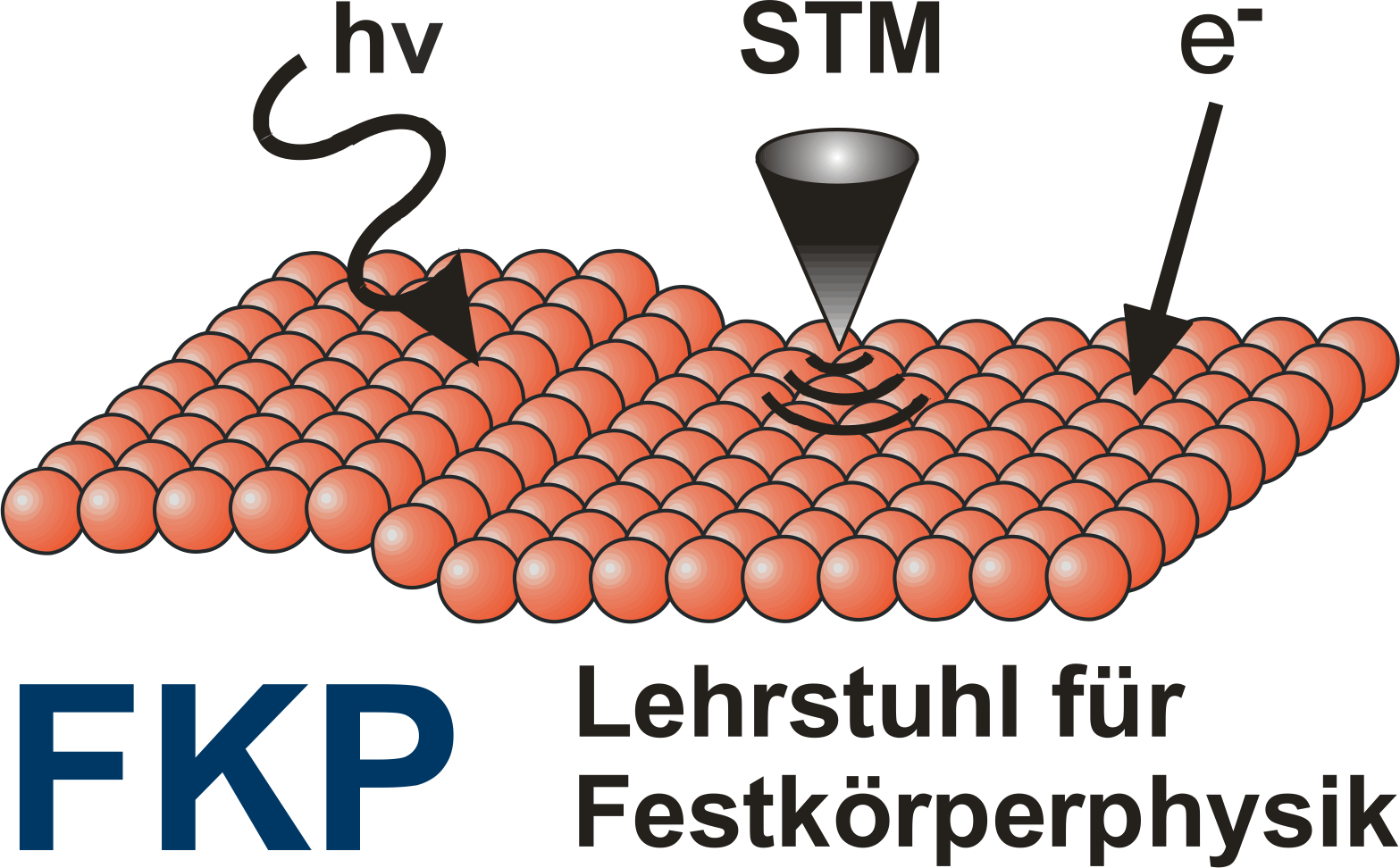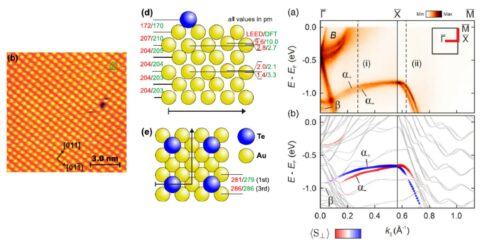Anisotropic spin and orbital Rashba effect of tellurium atoms on Au(100)
In a collaborative effort with the group of Prof. F. Reinert and Dr. H. Bentmann at University Würzburg the electronic structure of a tellurium (Te) adsorbate structure was investigated by angle resolved photoemission (ARPES, U Würzburg) and structure determination (U Erlangen). It turned out, that even in such a relatively simple surface structure formed by a square (2 × 2) arrangement of Te atoms sitting in hollow sites of the Au(100) surface complex electronic states arise due to hybridization of the Te with Au states. The picture shows an STM image of the surface structure, the structural details and the spin resolved ARPES data.
Particularly, spin-orbit interaction in conjunction with the square lattice symmetry and broken inversion symmetry at the surface causes a remarkably anisotropic Rashba effect. For the experiments and their interpretation the determination of the surface atomic structure and its independent reliable verification at the respective sites was key.
The work was published in Physical Review B: B.Geldiev, et al., Phys. Rev B 108, L121107 (2023) and can also be found on arXiv: https://doi.org/10.48550/arXiv.2308.02372

